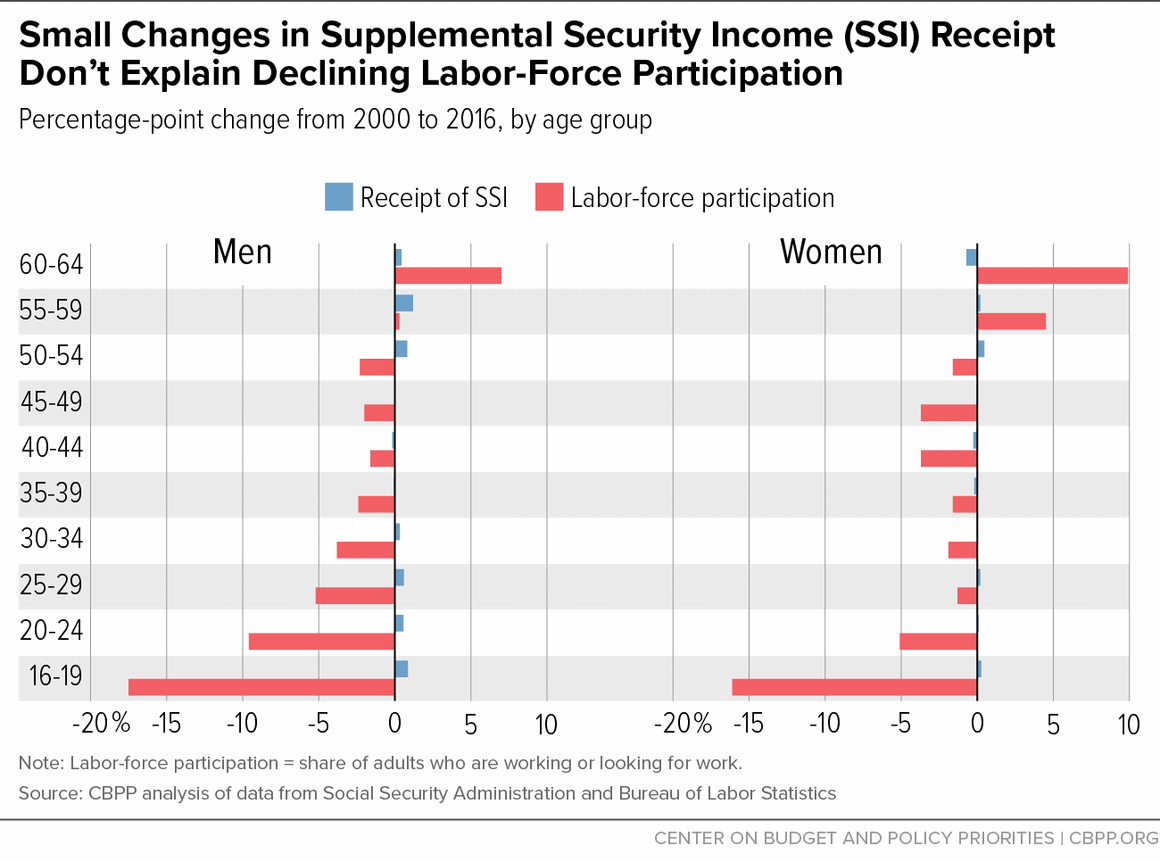BEYOND THE NUMBERS
We recently explained why it’s wrong to blame Social Security Disability Insurance (SSDI) — which pays modest benefits to workers under age 66 who’ve experienced a severe, career-ending medical impairment — for recent declines in labor-force participation (the share of adults 16 and older who are working or looking for work).
It would be equally wrong to blame Supplemental Security Income (SSI), a smaller but essential counterpart to SSDI that’s also run by the Social Security Administration.
SSI provides monthly cash assistance to people who are disabled or elderly and have little income and few assets. Unlike SSDI, SSI is a needs-tested program and doesn’t require a past work history. Compared with SSDI, SSI beneficiaries tend to be younger and to have early-onset, sometimes congenital, impairments such as intellectual disability. They also receive very modest benefits, a maximum of $735 a month and an average of $549.
There’s no reason whatsoever to ascribe the drop in labor-force participation from its 2000 peak to SSI:
- SSI allows and encourages recipients to work. Because it’s a needs-tested program, SSI reduces benefits when recipients have other income — but generally by just 50 cents for each $1 of earnings. (By contrast, SSI reduces benefits by $1 for each $1 of other, “unearned” income.) And SSI has special provisions to encourage young adults with severe disabilities to work.
- Nevertheless, few SSI beneficiaries can do sustained work. SSI’s medical criteria are strict — mirroring those for SSDI — and fewer than half of applicants are awarded benefits. SSI recipients, by definition, have severe impairments. Overall, about 6 percent of nonelderly adults on SSI have earnings in a typical month, and their earnings are generally modest and intermittent.
- There’s little or no correlation between changes in SSI receipt and in labor-force participation. Overall labor-force participation has declined from its peak, even when adjusted for an aging population, but that decline is concentrated among younger workers. Older people are actually working longer and postponing retirement. Meanwhile, rates of SSI receipt have barely risen for men and have been flat or declining among women (see graph). Those changes in SSI receipt can’t explain trends in labor-force participation since 2000.
Encouraging greater labor-force participation calls for a mix of policies — including improvements in education, training, and jobs programs; tax credits for low-paid workers; child care and other family-friendly arrangements; and criminal-justice reform. It’s especially important to draw young adults who aren’t college-bound — some of whom have physical or mental impairments — into the job market. But cutting disability programs isn’t a fix for declining labor-market attachment.

